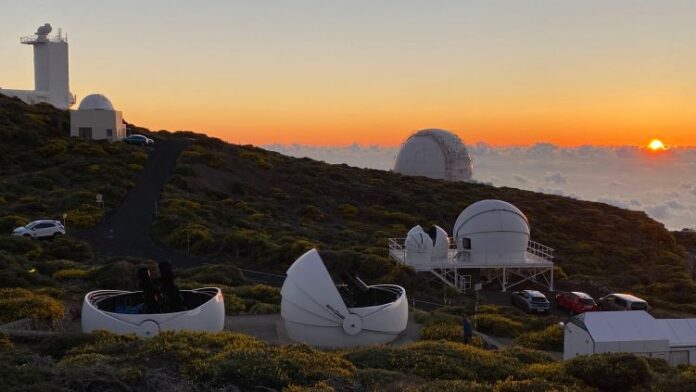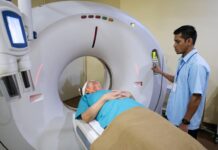A new telescope made up of two identical arrays on opposite sides of the planet has been produced to track down sources of gravitational waves for the first time.
A new telescope, made up of two identical arrays on opposite sides of the planet, one on La Palma in the Canary Islands and the other in Australia, has been produced to track down sources of gravitational waves for the first time.
The Gravitational-wave Optical Transient Observer (GOTO), a collaborative project led by the University of Warwick and with a major contribution by the University of Sheffield, will help shepherd in a new era of gravitational wave science.
Deployed on two opposite sides of the Earth to fully cover the sky, GOTO will scour the skies for optical clues about the violent cosmic events that create ripples, or waves, in the fabric of space itself.
Long hypothesised as a by-product of the collision and merger of cosmic behemoths such as neutron stars and black holes, gravitational waves were finally detected directly by LIGO (Laser Interferometry Gravitational-wave Observatory) in 2015.
Since 2015, there have been many subsequent detections but, since observatories like LIGO can only measure the effects of the gravitational wave as it passes through our local patch of space time, it can be difficult to track down the source’s point of origin.
GOTO is designed to fill this observational gap by searching for optical signals in the electromagnetic spectrum that might indicate the source of the gravitational waves (GW) – quickly locating the source and using that information to direct a fleet of telescopes, satellites and instruments at it.
As most GW signals involve the merger of massive objects, these ‘visual’ cues are extremely fleeting and must be located as quickly as possible, which is where GOTO comes in.
GOTO will act as an intermediary between the likes of LIGO, which detect the presence of a gravitational wave event, and more targetable multi-wavelength observatories that can study the event’s optical source.
Sheffield’s astronomers have made major contributions to all aspects of the GOTO project, from the design and management level to installing the hardware on La Palma, writing the control software that enables the telescopes to operate autonomously, and analysing the resulting scientific data.
Martin Dyer, a Leverhulme Postdoctoral Researcher at the University of Sheffield who works on GOTO, said: “Gravitational waves are created when two black holes or neutron stars in close orbit – each tens of times heavier than the sun – violently collide. The detection of gravitational waves is like knowing that a truck has passed by feeling the rumble in a road’s surface and trying to work out where it came from based on that alone.
“This telescope will be crucial for scientists across the world in order to broaden our understanding of the universe. Having access to the telescope will allow our astronomers at the University of Sheffield to accelerate and enhance their pioneering research in this important area of physics.”
Professor Danny Steeghs of the University of Warwick, GOTO’s Principle Investigator, said: “There are fleets of telescopes all over the world available to look towards the skies when gravitational waves are detected, in order to find out more about the source. But as the gravitational wave detectors are not able to pinpoint where the ripples come from, these telescopes do not know where to look.”
“If the gravitational wave observatories are the ears, picking up the sounds of the events, and the telescopes are the eyes, ready to view the event in all the wavelengths, then GOTO is the bit in the middle, telling the eyes where to look.”
Following the successful testing of a prototype system in La Palma, in Spain’s Canary Islands, the project is deploying a much expanded, second generation instrument. Two telescope mount systems, each made up of eight individual 40cm telescopes, are now operational in La Palma. Combined, these 16 telescopes cover a very large field of view with 800 million pixels across their digital sensors, enabling the array to sweep the visible sky every few nights.







